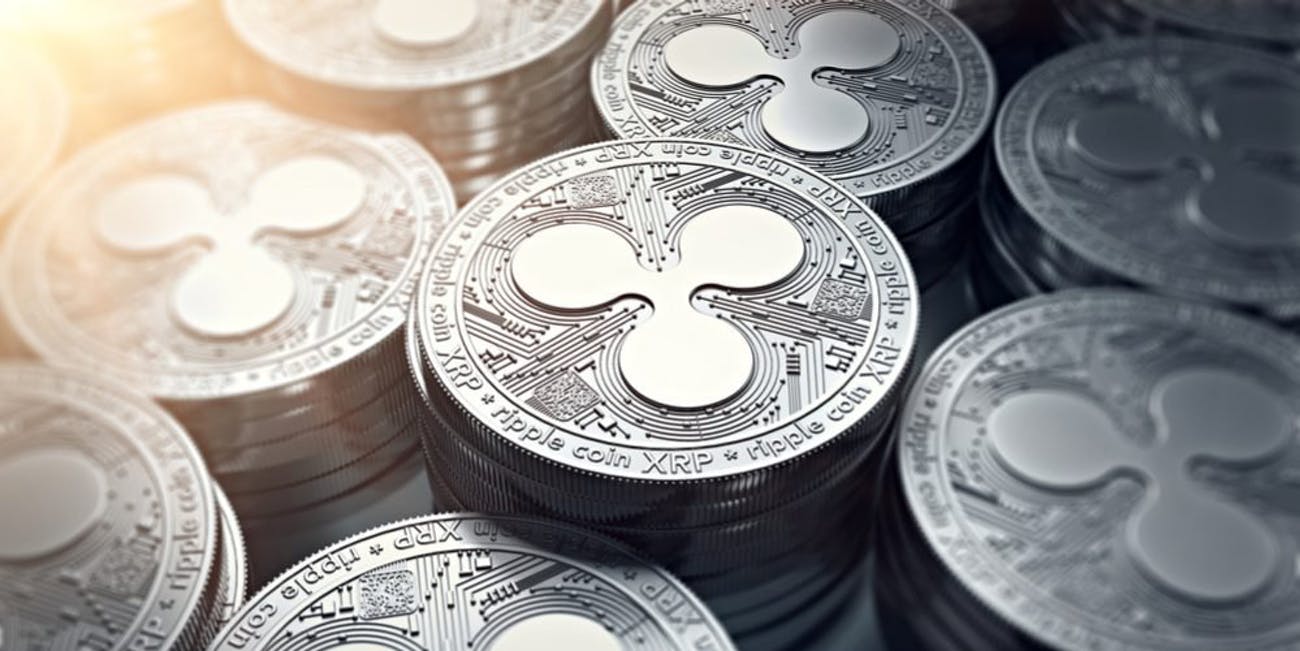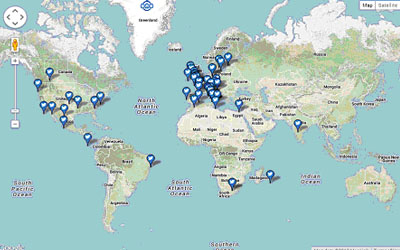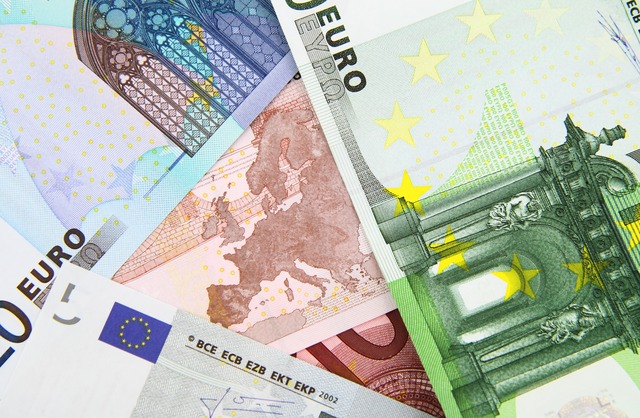In the third instalment of this series, HCM Ron Huddlestone gives us his view on the events in the currency markets this week, and his forecast for the week ahead.
Overview
Yesterday Russian President Putin has said there is no need for Russian military intervention in Ukraine. During the same address he also said Russia has the right ‘to take all measures’. Somehow these mixed comments eased tensions. The USD, the Japanese Yen, and the Swiss Franc all weakened. In fact, the yen declined the most in 2 weeks. The week’s moves are entirely related to geopolitics, and they came as welcome relief to commodity and emerging market currencies weakened by the crisis. Simply put, ‘risk on / risk off’, which is defined as investment activity in response to global economic patterns, perfectly describes the current market.
Because I was asked, here’s a little background on the Russian ruble and Ukrainian hryvnia (Yes, it’s the hryvnia…not a typo. Current rate is USD/UAH 9.9970).
The hryvnia (UAH) plunged to an all-time low versus the U.S. dollar, and the Russian ruble broke through its previous low against the greenback on Monday. On Tuesday both currencies moderately recovered. As a FT op-ed writer Butler stated, “Russia’s weakness is its overwhelming dependence on oil and gas export revenues. Russia exports 6m barrels of crude oil and another million barrels of oil products to Europe every day. Europe also buys a third of total Russian gas production. Moscow simply cannot afford to lose any significant proportion of that revenue. Four gas pipelines run through the Ukraine. On a short-term basis Europe needs Russian energy but the dependence is not entirely mutual. On a longer-term basis Europe has other options and every burst of Russian rhetoric must be encouraging European governments to prepare contingency plans. Russia has no such options.” Ron Huddleston’s opinion is not to get involved with either currency unless you want to gamble or you have a need to hedge.
Couple of other things:Safe
- This morning Chinese authorities stated that they’re sticking to the 7.5% annual growth target.
- ECB policy meeting on Thursday and U.S. payrolls are on Friday are likely to be more influential than normal. Market demand for safe havens can turn on a dime, so don’t be surprised by reversals.
Euro (EUR)
Considering the clouds of unrest from Russia’s stance in the Ukraine, the EUR has performed well in the fortnight. Soft German inflation and geopolitical deterioration damped the single currency’s continued strength, but since our last commentary, Euro-zone inflation did not fall (Remaining at 0.8%) while core inflation went up and German business sentiment improved. The combined affect was that the EUR rallied strongly breaking a resistance line. All this said, the Euro is not out of the woods yet. Technically it needs to match-and-surpass the recent high at 1.3825, and more importantly it needs for world jitters to subside. EUR/USD implied volatility is up 1.0%. Look for short term technical weakness.
- Current EUR/USD rate is 1.3733 – Mid implied volatility is 7.02%.
- Current EUR/JPY rate is 140.47 – Mid implied volatility is 10.24%.
Recommended Enhanced Yield structure: Short EUR forward.
- Short EUR/USD forward at 1.3725 for 2-Weeks.
- Sell 2-Week EUR Put /USD Call with 1.3680 Strike (34 Delta).
- Forward’s implicit deposit rate is -0.10 %.
- Yield from US dollar cash position 0.24%.
- Yield from option premium is 9.08% annualized.
- Structure’s yield is 9.22% (from forward deposit rate, U.S. deposit rate, and option’s premium), plus potential capital gain from EUR depreciation to 1.3670.
Australian Dollar (AUD)
RBA was the first of several major central bank meetings this week. They are keeping rates steady at 2.50% with a neutral interest rate bias. AUD spiked on the news. Gov. Stevens said “The decline in the exchange rate seen to date will assist in achieving balanced growth in the economy, though the exchange rate remains high by historical standards.” Normally this would inspire a dip, but a general market reversal in risk sentiment seems to have supported to AUD. On Wednesday morning Australia reported GDP up 0.8% in Q4, more than 0.7% forecast, and February manufacturing PMI rose. Despite the RBA’s complaints, the AUD continues higher. Implied volatility is up.
Current AUD/USD rate is 0.8984
- Mid implied volatility is 9.28%.
Recommended Enhanced Yield structure: Long AUD forward.
- Long AUD/USD forward at 0.8993 for 2-Weeks.
- Sell 2-Week AUD Call / USD Put with 0.9030 Strike (41 Delta).
- Forward’s implicit deposit rate is 2.25%.
- Yield from US dollar cash position 0.24%.
- Yield from option premium 13.02% annualized.
- Structure’s yield is 15.51% annualized (from forward deposit rate, U.S. deposit rate, and option’s premium) plus potential capital gain from AUD appreciation to 0.9030.
Great British Pound (GBP)
The pound advanced as data showed a surge in business investment helped the British economy grow for a 4th straight quarter. Also, on Wednesday Markit reported the service sector PMI beat forecast. The GBP has been buoyant since the BoE raised its forecast for 2014 economic growth to 3.4% from 2.8%. Expectations of a rate rise in the second quarter of next year have served to strengthen the currency. Implied volatility is marginally higher.
Current GBP/USD rate is 1.6722.
- Mid implied volatility is 6.11%.
Recommended Enhanced Yield structure: Long GBP forward.
- Long GBP/USD forward at 1.6720 for 3-Weeks.
- Sell 3-Week GBP Call / USD Put with 1.6800 Strike (38 Delta).
- Forward’s implicit deposit rate is 0.28%.
- Yield from US dollar cash position 0.24%.
- Yield from option premium is 7.35% annualized.
- Structure’s yield is 7.87% annualized (from forward deposit rate, U.S. deposit rate, and option’s premium), plus potential capital gain from GBP appreciation to 1.6800.
Canadian Dollar (CAD)
The major event for the loonie this week was today’s Bank of Canada’s interest rate announcement (A drum roll please)…. As expected the Bank of Canada kept its main interest rate unchanged and reiterated its wait and see policy. Anyone surprised?
Some good data did come out of Canada: economic growth unexpectedly accelerated in the 4th quarter as consumers kept spending and companies added to inventories, and GDP grew at a 2.9 percent annualized pace from October through December compared with 2.7 percent in the prior three months. February employment data for Canada will be released on Friday; Canadian job growth is expected at around 19,000 jobs. Late Wednesday the loonie reached its highest level in two weeks.
In spite of this rosy picture, market expectations remain that rates will not be raised during 2014. So, continue to expect CAD weakness.
- USD/CAD rate is 1.1029 – Mid implied volatility is 7.21%
Recommended Enhanced Yield structure: Short CAD forward
- Long USD/CAD forward at 1.1035 for 2-Weeks.
- Sell 2-Week USD Call / CAD Put with 1.1110 Strike (34 Delta).
- Forward’s implicit deposit rate is 0.00%.
- Yield from US dollar cash position 0.24%.
- Yield from option premium is 10.37% annualized.
- Structure’s yield is 10.61% annualized (from forward deposit rate, U.S. deposit rate, and option’s premium), plus potential capital gain from CAD depreciation to 1.1105.
Japanese Yen (JPY)
Traders pushed the JPY higher searching for safety brought about by events in Ukraine. But the JPY’s safe haven status wasn’t the only reason for strength in the fortnight, there was also positive data out of Japan: January industrial output rose 4% m/m, household spending firmed to 1.1% y/y, the jobless rate was steady at 3.7% and the core CPI was steady at 1.3% y/y. The nation’s industrial production in January grew the most since 2011, indicating the economy is strengthening and inflation matched the highest level in more than five years. But, it’s still Japan, the demographic time bomb. Also technicals point to JPY weakness.
- Current USD/JPY rate is 102.29 – Mid implied volatility 8.93%.
- Current EUR/JPY rate is 140.47 – Mid implied volatility is 10.24%.
Recommended Enhanced Yield Structure: Short JPY vs. EUR (As opposed to a JPY vs. USD, because EUR/JPY implied volatility is higher. Additionally, this position offsets the book’s overall EUR exposure).
• Long EUR/JPY forward at 140.53 for 3-Weeks.
• Sell 3-Week EUR Call / JPY Put with 141.45 Strike (42 Delta).
• Forward’s implicit deposit rate is -0.10 %.
• Yield from US dollar cash position 0.24%.
• Yield from option premium is 11.46% annualized.
• Structure’s yield is 11.60% (from forward deposit rate, U.S. deposit rate, and option’s premium), plus potential capital gain from EUR appreciation to 141.45. Additionally, structure benefits from potential appreciation vs. USD.
Mexican Peso (MXN)
Not much to report from America’s southern neighbor. Mexico’s February consumer confidence was steady at 84.5, and the peso is up for most of February. For the last week of the month the MXN posted its only weekly decline on concern that Ukraine’s turmoil will stall the global economic recovery and disproportionately affect the emerging markets.
Current USD/MXN rate is 13.24
- Mid implied volatility is 10.51%.
Recommended Enhanced Yield Structure: Sell MXN Put against U.S. deposit, not a forward.
- Sell 2-Weeks USD Call / MXN Put with 13.45 Strike (23 Delta).
- Yield from US dollar deposit 0.24%.
- Yield from option premium is 7.30% annualized.
- Structure’s yield is 7.54% annualized (from deposit and option’s premium). If option is assigned, result will be long MXN at 13.45.
About the author
Mr. Huddleston has nearly 20 years of financial services experience, with primary expertise in the conceptual and structural development and trading of derivatives. He has also held a range of senior advisory positions working with high net worth and institutional clients, with his most recent role at Wells Fargo focused on the development of customized foreign exchange derivatives for the firm’s ultra high net worth clients. Mr. Huddleston has also held a range of management and trading positions at Capital Markets Trading (Frankfurt), Dresdner Bank (Frankfurt) and Citibank (Frankfurt and Hong Kong). Mr. Huddleston was a member of the Pacific Stock Exchange, where he was an options market maker on Microsoft listed stock options.
Huddleston Capital Management (HCM) is the managing member and investment manager of the Enhanced Yield Currency Fund (EYC). The managing partner is Ron Huddleston, me. HCM is registered in the United States as a Commodity Pool Operator (CPO) and a Commodity Trading Advisor (CTA) with the NFA and CFTC. In addition to the fund, HCM offers managed accounts using OTC options and forwards. HCM is looking to partner with a U.S. bank to introduce foreign exchange managed accounts and investment products that will allow clients to gain alpha, diversify, and hedge currency exposure.
The EYC fund strategy uses OTC options and forwards in a covered call approach; short call options corresponding to the long side of forwards are held. The short calls are covered by the long side of the corresponding forward contract. The option positions match the expiration, notional amount, and the currency of the long side of the forward contract. The positions’ terms range from 2-Weeks to 6-Months.
This post was originally published on Hedgethink.com, a digital thought leadership platform focused on the hedge fund industry. See its full range of daily content here.
Tradersdna is a leading digital and social media platform for traders and investors. Tradersdna offers premiere resources for trading and investing education, digital resources for personal finance, market analysis and free trading guides. More about TradersDNA Features: What Does It Take to Become an Aggressive Trader? | Everything You Need to Know About White Label Trading Software | Advantages of Automated Forex Trading














































